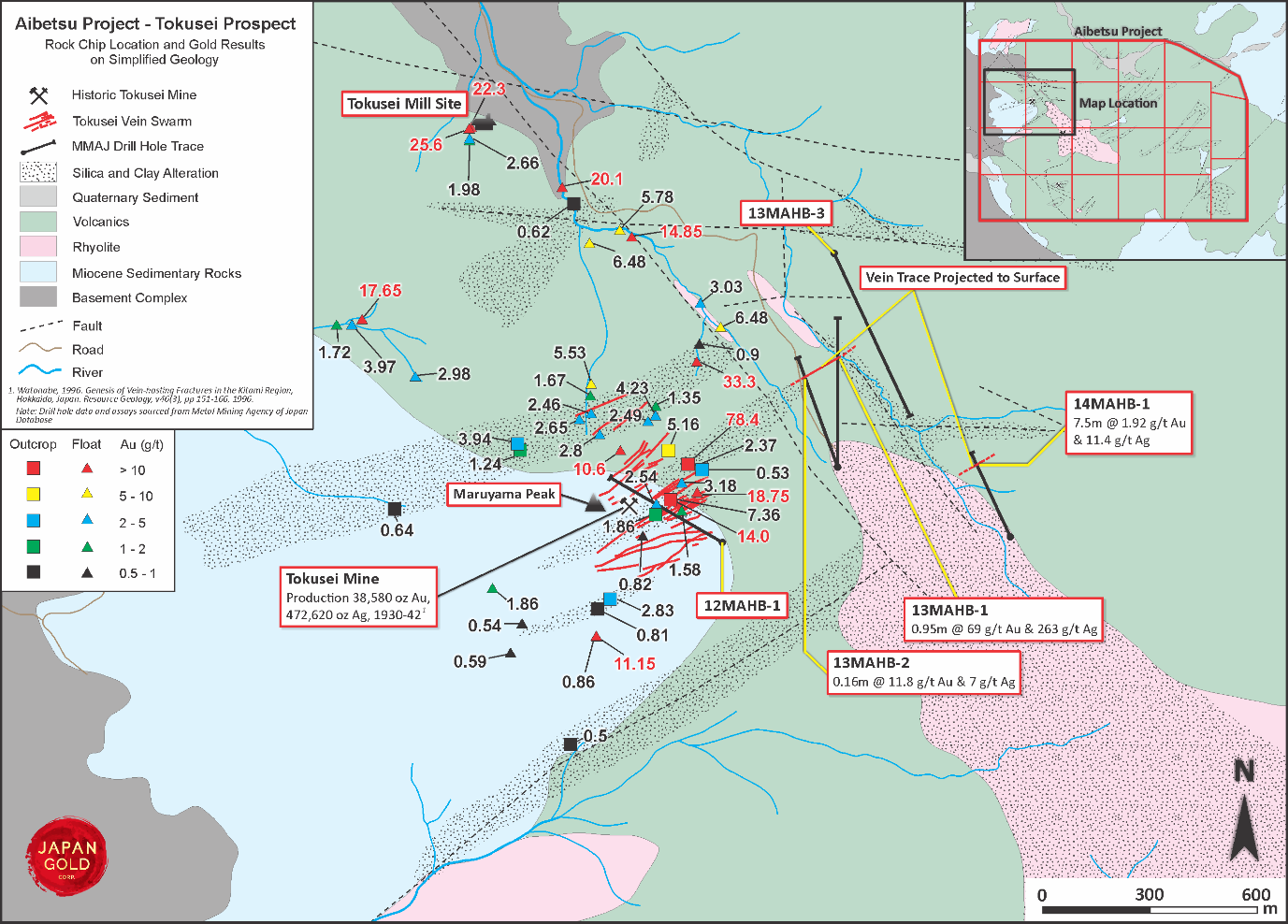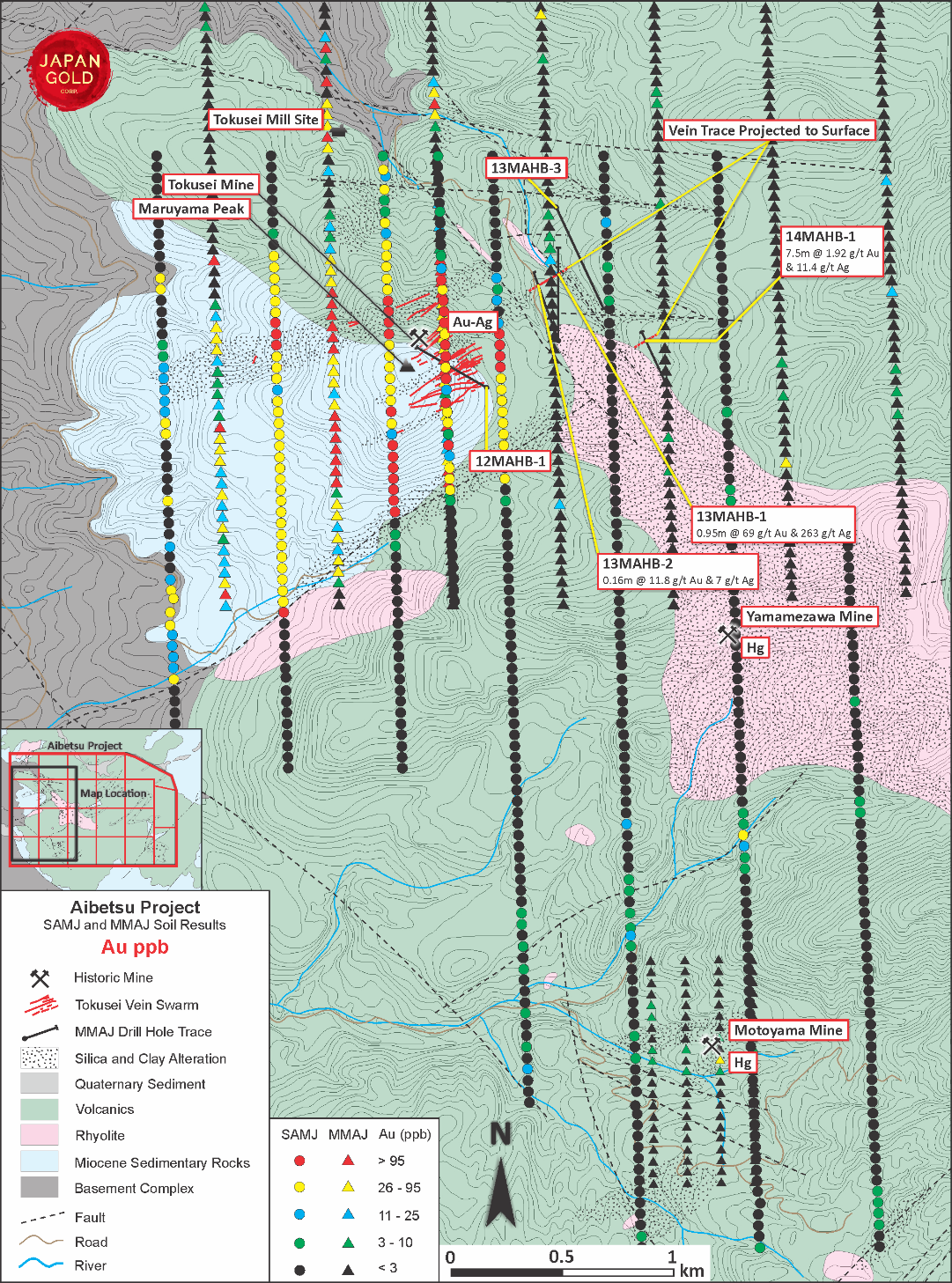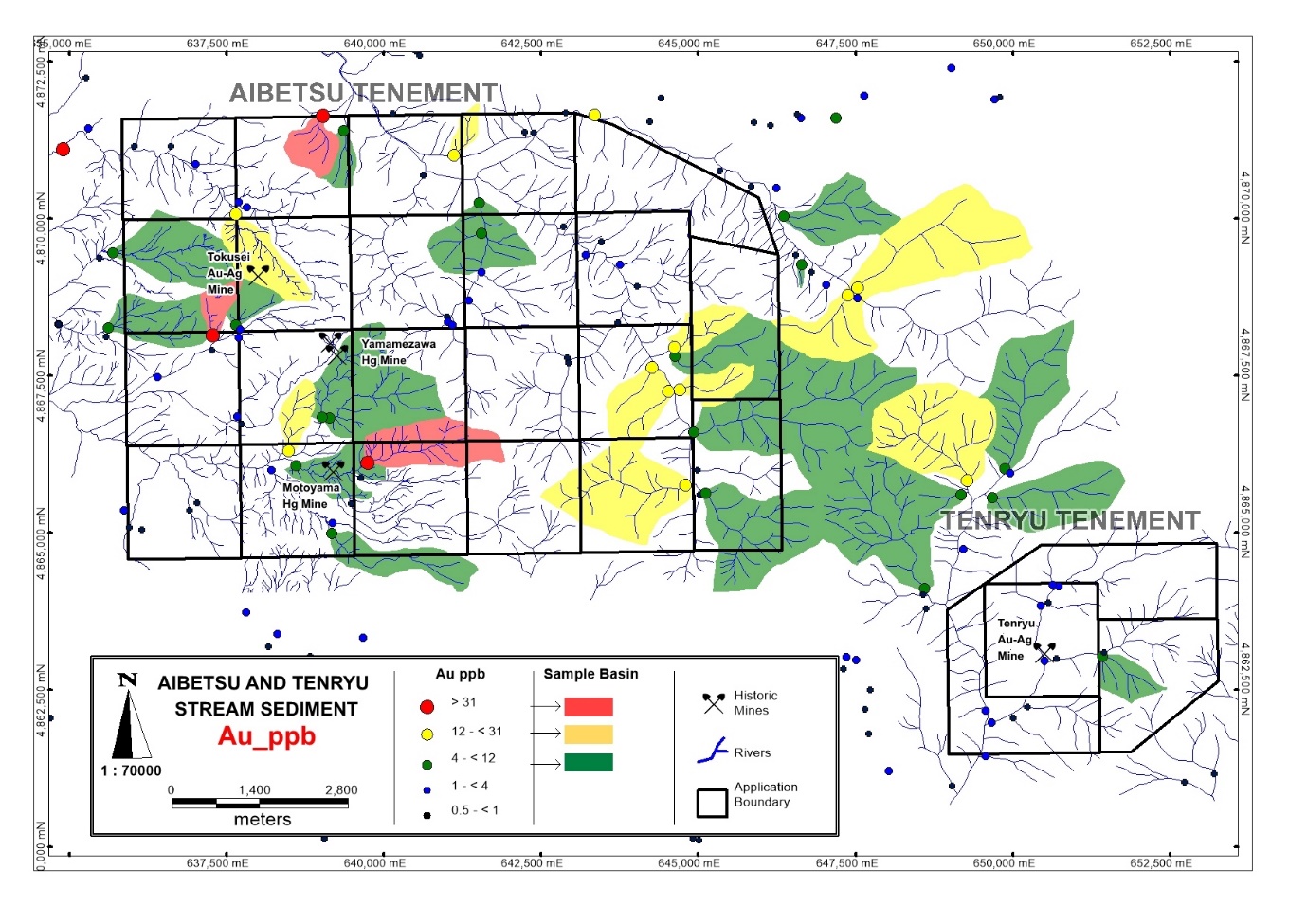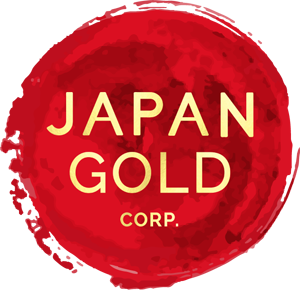Exporation
Japan Gold executed geological mapping, geochemical rock sampling, and soil sampling activities across the western half of the Aibetsu Project in 2017. Detailed mapping has allowed the preparation of interpretive geology and alteration maps of the western portion of the tenement. Gold-bearing veins were also located, described and sampled. A total of 237 rock samples were collected. The soil sampling program covered the areas of highest priority, the Tokusei mine area and the Motoyama and Yamamezawa mercury mine areas to the south. Soil sample locations were designed to supplement the available soil data from previous MMAJ activities. A total of 581 soil samples were analysed for gold, silver and a multi-element ICP suit. Soil samples were collected at 50 m intervals along 500 m spaced north-south grid-lines. At the Tokusei mine area these lines infilled previous MMAJ soil lines giving a overall 250 m spaced line separation.
 Gold in rock results from the Tokusei Au-Ag and Yamamezawa Hg mine areas.
Gold in rock results from the Tokusei Au-Ag and Yamamezawa Hg mine areas.
Exploration results confirmed the presence of high-grade gold mineralization within and around the historic Tokusei mine workings and emphasize significant potential for extensions to the epithermal vein system at the Tokusei mine.
Exploration results to date indicate that gold and silver are concentrated in banded chalcedonic quartz veins, with assays ranging from 0.01 - 78.4 g/t Au and 0.05 - 380 g/t Ag, and that selenium has a strong correlation to gold-silver in rock samples. Other pathfinder elements in rock- and soil-samples include As, Sb, Tl, Hg and W. The optimal depth range for the veins discovered to date ranges from the 580 m RL to surface (up to 820 m RL), representing a 240 m vertical extent. The productive veins in the Tokusei mine area strike easterly to northeasterly, dip steeply and are localized near the contact between Miocene sedimentary rocks and underlying andesitic volcanic rocks. The vein system is open to the southwest. Soil and rock geochemical anomalies indicate that the Motoyama mercury mine area is prospective for gold-silver.
 Gold in soil results across the western half of the Aibetsu project area.
Gold in soil results across the western half of the Aibetsu project area.
Mapping conducted along grid lines has confirmed the presence of silica capping and sinter outcrops on Mt Maruyama above the Tokusei veins, suggesting limited erosion has occurred, the vein systems are likely well preserved, and thus, the full down-dip extent of the vein systems could be intact or preserved.
Complete results from the 2017 exploration program at Aibetsu can be found in the Company’s news release dated: February 28, 2018.
No recent field work has been completed across the eastern half of the Aibetsu Project area. Available stream sediment data indicates possible gold mineralization in the southeastern portion of the Aibetsu Project, which remains unexplored, Japan Gold intends to complete regional exploration coverage of this part.
 Gold (ppb) in stream sediment results from the MMAJ drainage sampling program.
Gold (ppb) in stream sediment results from the MMAJ drainage sampling program.

